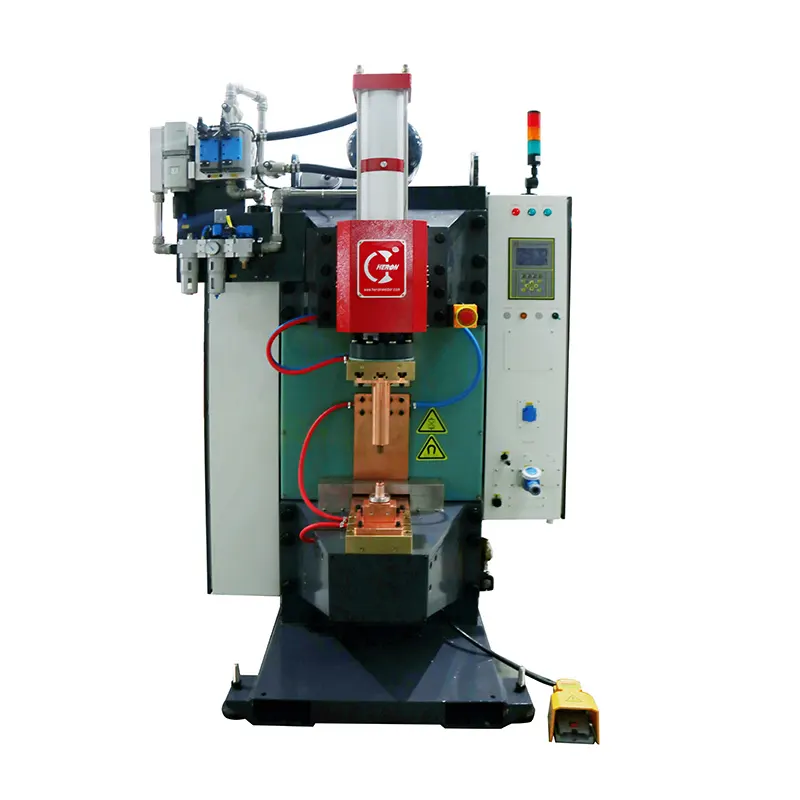Advantages and Disadvantages of Resistance Welding Technology
Resistance welding is a process in which the workpiece to be welded is pressed between two electrodes and a current is passed through it. The resistance heat generated by the current flowing through the contact surface and adjacent areas of the workpiece is used to heat it to a molten or plastic state to form a metal bond. method.
During spot welding, the workpiece is only welded on a limited contact surface, the so-called "point", and forms an oblate spherical nugget. Spot welding can be divided into single spot welding and multi-spot welding. When multi-spot welding, use Two or more pairs of electrodes form multiple nuggets in the same process.
Seam welding is similar to spot welding. During seam welding, the workpiece passes between two rotating disc-shaped electrodes (rollers), forming a continuous weld with overlapping front and rear welding points.
Projection welding is a variation of spot welding. There are prefabricated bumps on a workpiece. During projection welding, one or more nuggets can be formed at the joint at a time.
During butt welding, the end faces of the two workpieces are in contact and are welded along the entire contact surface after resistance heating and pressure.
Resistance welding has the following advantages:
1. When the nugget is formed, it is always surrounded by a plastic ring, the molten metal is isolated from the air, and the metallurgical process is simple.
2. The heating time is short and the heat is concentrated, so the heat affected zone is small, deformation and stress are also small, and there is usually no need to arrange correction and heat treatment processes after welding.
3. There is no need for filler metals such as welding wires and electrodes, as well as welding materials such as oxygen, acetylene, and argon, so the welding cost is low.
4. Simple operation, easy to implement mechanization and automation, and improved working conditions.
5. High productivity, no noise or harmful gases. In mass production, it can be put on the assembly line together with other manufacturing processes. However, flash butt welding needs to be isolated due to spark splash.
Disadvantages of resistance welding:
1. There is currently a lack of reliable non-destructive testing methods. Welding quality can only be checked by destructive testing of process samples and workpieces, and guaranteed by various monitoring technologies.
2. Point and seam welded lap joints not only increase the weight of the component, but also cause the angle formed around the nugget between the two plates, resulting in low tensile strength and fatigue strength of the joint.
3. The equipment has high power and a high degree of mechanization and automation, which makes the equipment cost high and maintenance difficult. Moreover, the commonly used high-power single-phase AC welding machines are not conducive to the normal operation of the power grid.
Contact Person: Christina Liu
Tel: 86 20 87813325 / 86 20 87819588 / 86 20 87815075
Fax: 86 20 87813346
Address: No.63 Xin Yi Road, Guangzhou, Guangdong China 510990












